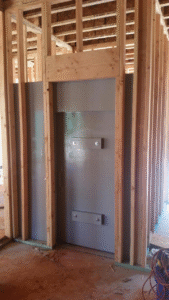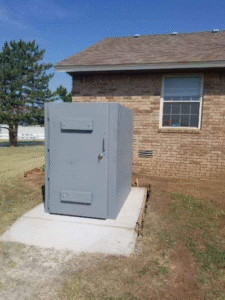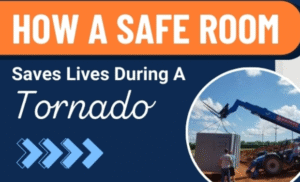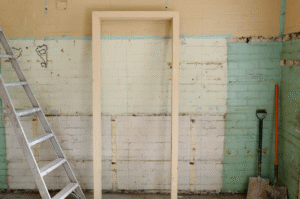If you’re considering a safe room to protect your family from severe weather in Fort Worth, you’re making a wise decision. However, the safe room planning and construction phases are critical to ensure your safe room provides maximum protection. Avoiding common mistakes during this process can save you time, money, and potential safety hazards.
Neglecting FEMA and ICC Safety Standards
One of the most significant errors homeowners make is failing to adhere to established safety standards. The Federal Emergency Management Agency (FEMA) and the International Code Council (ICC) have set guidelines for safe room construction. For instance, FEMA’s guidelines specify that safe rooms should be designed to withstand wind speeds of up to 250 mph and be constructed with materials that can resist flying debris during a tornado. Not meeting these standards can compromise the safety of your shelter.
Choosing the Wrong Location
The placement of your storm- or tornado-safe room is crucial. It should be easily accessible and located in an area least likely to be affected by structural damage during a storm. Avoid placing it near exterior walls or in basements prone to flooding. Experts recommend positioning the safe room in the center of your home on the lowest level to minimize risk.
Underestimating Ventilation and Supplies

A safe room isn’t just about walls and doors; it’s about ensuring survival during an emergency. Proper ventilation is essential to prevent suffocation, especially if the room is sealed during a storm, such as a steel storm shelter or an underground one. Additionally, stock the room with essential supplies like water, non-perishable food, first-aid kits, flashlights, and a battery-powered weather radio. Neglecting these can render your safe room ineffective in a prolonged emergency.
Opting for DIY Without Professional Guidance
While the idea of building a custom safe room yourself might seem cost-effective, it’s fraught with challenges. Improper construction can lead to structural weaknesses, making the room less effective. It’s advisable to consult with professionals experienced in storm-safe room design and construction to ensure compliance with safety standards and local building codes.
Ignoring Local Building Codes
Each region has specific building codes tailored to its unique environmental challenges. In Fort Worth, for example, the area is susceptible to tornadoes, and local codes may require certain reinforcements or materials for safe room construction. Ignoring these codes can not only jeopardize safety but also lead to legal complications or issues with insurance claims.
Overlooking Insurance Implications

Installing a safe room can potentially lower your homeowner’s insurance premiums, but only if it’s properly documented and meets the necessary standards. Failing to inform your insurance provider about the installation or not having the room inspected can result in missed opportunities for discounts and, in some cases, complications during claims.
Planning a safe room, such as a storm shelter or a tornado shelter, is a proactive step toward safeguarding your loved ones during severe weather events in Fort Worth. By avoiding these common mistakes, you can create a safe haven that will protect you and your loved ones.
For Fort Worth homeowners looking to install safe rooms in Fort Worth, consider partnering with US Safe Room. They specialize in designing and constructing custom safe rooms that meet FEMA and ICC standards, ensuring your family’s safety during severe weather events. Contact them today to learn more about how they can assist you in fortifying your home.










